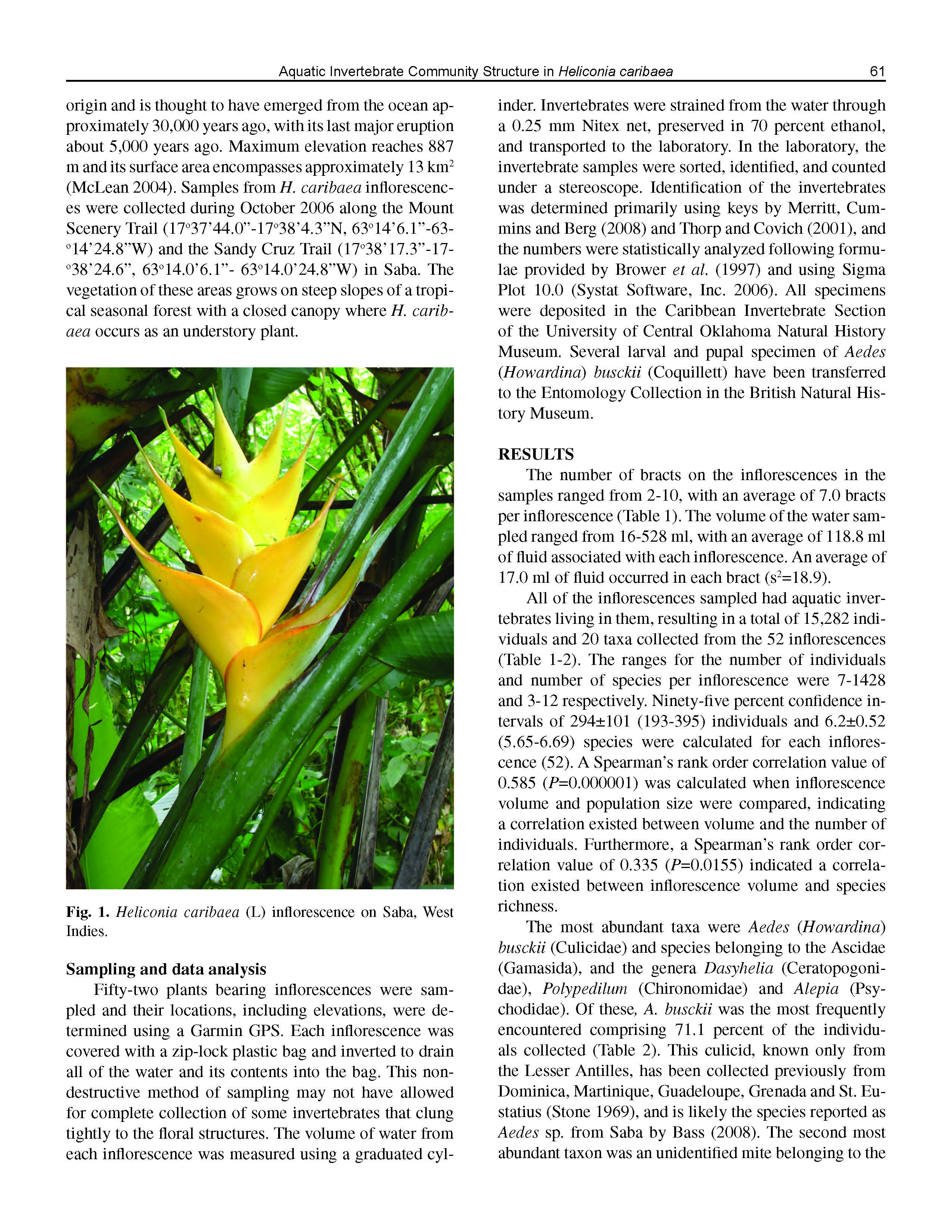Aquatic Invertebrate Community Structure in Water-filled Bracts of Heliconia caribaea (Heliconiaceae) on Saba, West Indies
Keywords:
Antilles, elevation, leeward, phytotelmata, Saba, species-area relationship, windwardAbstract
The aquatic invertebrate community living in the liquid-filled bracts of Heliconia caribaea (Heliconiaceae) inflorescences was studied on Saba, a small island in the northeastern Caribbean Sea, during October 2006. Invertebrates were collected by inverting inflorescences (n=52) to drain all of the liquid and its contents from the bracts into zip-lock plastic bags. All 52 inflorescences had invertebrates present in their bracts. Totals of 15,282 individuals and 20 taxa were collected from the H. caribaea inflorescences, and all 20 taxa were found only in water-filled bracts of this plant on Saba. Immature dipterans and ascid mites comprised the most abundant groups found. An average of 6.2 species and a confidence interval of 294±101 individuals for each inflorescence were calculated. Spearman’s rank order values indicated correlations between both the number of species and the population sizes and the volume of liquid in each inflorescence, findings that support the species-area aspect of island biogeography theory. The Mann-Whitney statistic indicated no significant differences in population sizes and species richness in collections made at different elevations. The Mann-Whitney statistic also indicated there were no significant differences in population sizes and species richness in collections made on the windward side of Saba compared with those from the leeward side of the island. Seventeen of the invertebrate taxa found living in the H. caribaea inflorescences are being reported from Saba for the first time.

